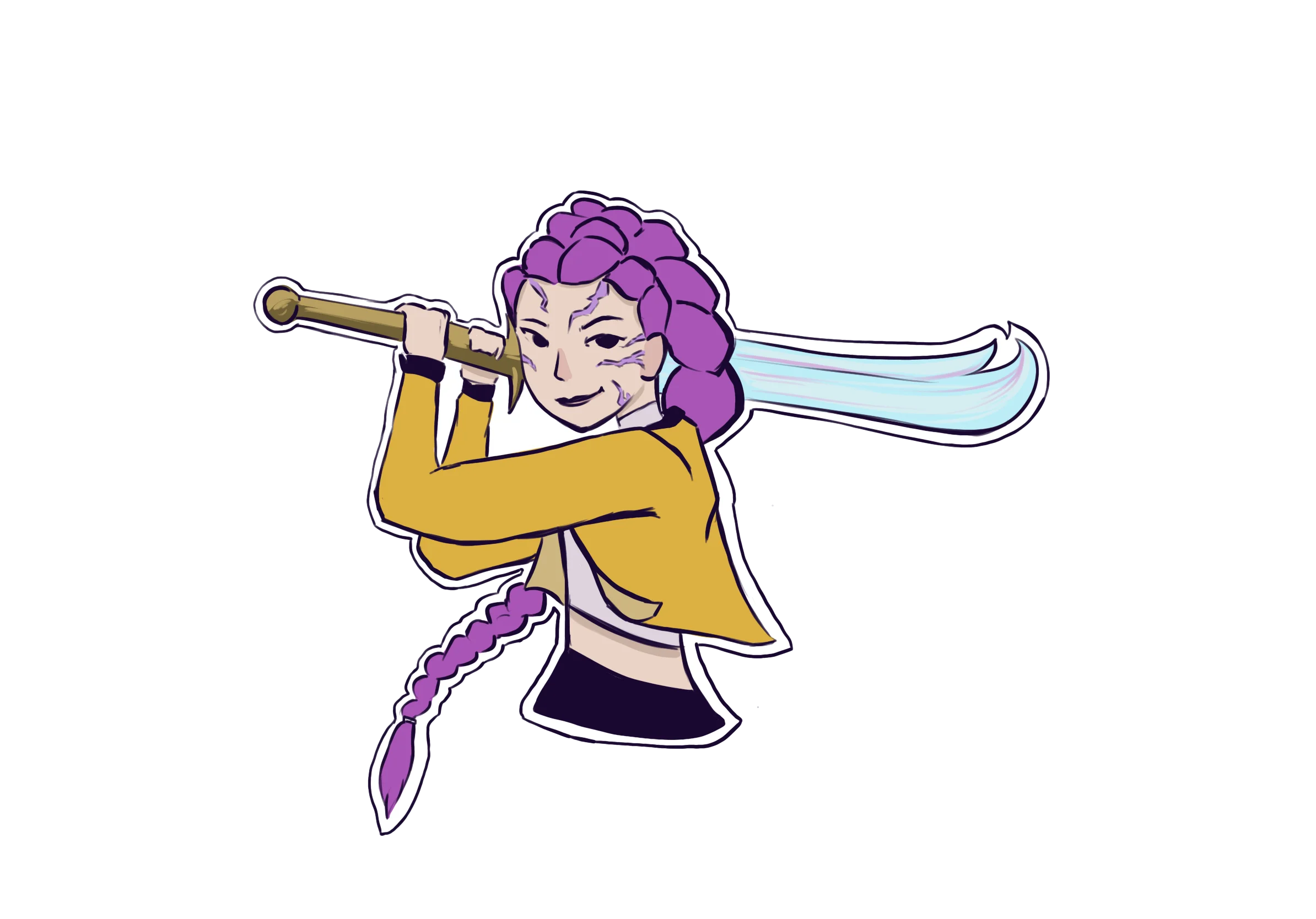“KPop Demon Hunters” slays
September, 2025
Graphic: Charley Hu
A K-pop girl group fighting a hot demon boy band for the fate of the world? When I first heard the premise of “KPop Demon Hunters” from my sister, I laughed it off. After much insistence, I reluctantly sat down and watched what would become the cultural phenomenon of the summer. But it wasn’t just a stroke of luck that the movie was such a massive hit.
For me, the true magic of the movie wasn’t its punchy animation or catchy songs, but its incorporation of Korean culture. My reluctance came from a disappointing experience with another animated movie released over the summer, “Elio”: just another generic plot and recycled animation style.
However, “KPop Demon Hunters” pulled me in because it went beyond using Korean culture as just another trendy aesthetic. Director Maggie Kang’s nine years of research is evident throughout the movie, referencing Korean mythology as well as lesser-known Korean dishes. For example, protagonists Rumi, Mira, and Zoey, collectively known as Huntr/x, try to save the world from demons by sealing them through the “Honmoon” with their songs. The idea was taken from Korean muldang dancers, women who perform protective rituals. Even Derpy and Sussie, the internet-famous tiger and magpie duo, were designed after minhwa, Korean folk art.
The highlight of the entire movie for me came towards the end. The Saja Boys, an all-demon boy band and nemesis of Huntr/x, perform their chart topping song “Your Idol.” After my sister and I had managed to stop singing along, I noticed their outfits, traditional Korean clothes called hanbok. All of them even wore the traditional hats (gat), a detail my mother was all too happy to point out.
Even songs from Huntr/x and the Saja Boys — fictional groups — topped the Spotify charts, surpassing very popular groups like BLACKPINK and BTS. But the movie’s ultimate success is the buzz surrounding what I consider the movie’s best song: “Golden,” which is now being considered for Best Original Song for next year’s Oscars.
I still believe one of the main reasons behind the popularity of “KPop Demon Hunters” is because of how well it knew its audience. The movie tapped into a pre-existing interest towards K-pop and Korean culture, fueling its popularity globally. Nowadays, animation studios are finding it harder to come up with original ideas that still grab the audience’s interest. But as “KPop Demon Hunters” has shown, true connection isn’t found in generic plots, but in the heart of a cultural moment.